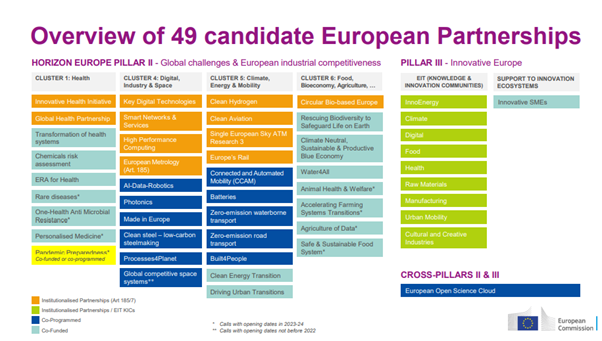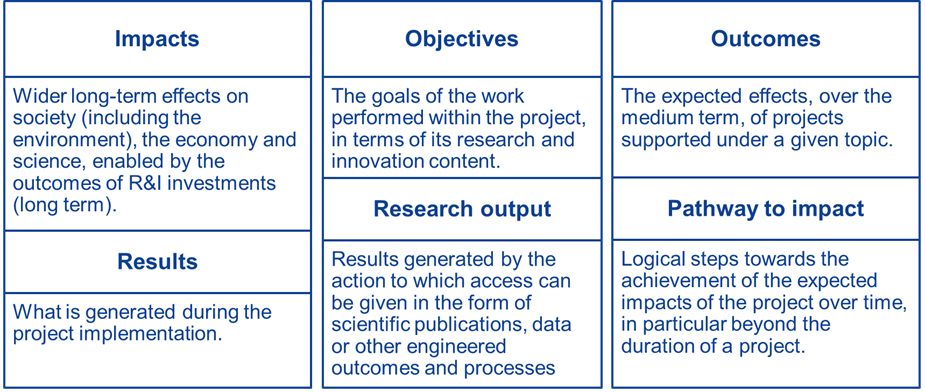News |
|
Beyond accumulating new knowledge, developing new technologies or increasing European competitiveness, Horizon Europe aims to achieve tangible benefits for European citizens related to the main challenges addressed by the programme (Digital transition, Ecological transition (Green Deal), Health resilience, Economic resilience and recovery). Horizon Europe is evolving into an impact-driven framework programme, based on a new holistic monitoring approach. This new Horizon Europe programme will be monitored as a virtuous circle to design (Intervention logic at the level of clusters, destinations, missions), implement (at the level of strategic Plan, Work Programme Proposal template, Project reporting) and assess the programme’s impacts (through Monitoring Key Impact Pathways, Management & Implementation Data, Interim and ex-post evaluation). For maximising impact at the level of the programme, new features have been introduced, among them, enlarged international cooperation, an in-depth open science policy, missions orientation and citizens’ involvement, to name a few. The Horizon Europe Legislation has defined 3 types of impacts, tracked with key Impact Pathways (KIP). The impact logic of the programme is framed by Key Impact Pathways (KIP) detailed in the figure below and defined by Horizon Europe legislation. A legal basis extended to the project level This legal basis has been included and translated in the strategic plan (Policy priorities and R&I strategic orientation) and implemented in the work programmes. General objectives have been implemented in work programmes, in destinations and specific objectives within topics. Within the topics, the operational objectives are listed as expected outcomes. Finally, the practical implications will rely on the project’s pathways to Impacts to be detailed in the project proposal. This integrated vision is shown below, in figure 2. KPIs will be important aspects for the implementation of a project; they should be linked to the objectives of the project. But then how are they linked to KIPs? KPIs will be linked to inputs and outputs of projects; it happens during the project. KIPs will be linked to expected outputs and impacts of projects at short and bidden terms, after the project. There should be a correlation between KPIs and KIPs in the project proposal. How to describe the impact of a Horizon Europe project proposal? The main impact criteria for evaluators are
Analysing the introduction to the work programme, the introduction to the destination, and the topic will be critical to the success of this exercise, as exemplified in the figure below. Knowledge of the links of the WP to the strategic plan will be a plus. In this impact-driven framework, new vocabulary has been defined and is vital to understand. The impact section of the Part B of the project proposal is organised in 3 parts:
Conclusion
In the new Horizon Europe programme, much is done at a European or a more local level, so that European citizens are informed about the work financed by the European Union and understand how they can benefit from it. New tools have been put in place for tracking the global and specific impacts of the funded projects and initiatives. Beside “Excellence,” an impact-driven approach is necessary, even at the project scale, which will ensure that the results do not stay on shelves and the work funded by public money will create real impact through future concrete, innovative products or services. Article courtesy of EAIC member, Benkei.
0 Comments
Leave a Reply. |
Categories
All
Archives
July 2024
|






 RSS Feed
RSS Feed
